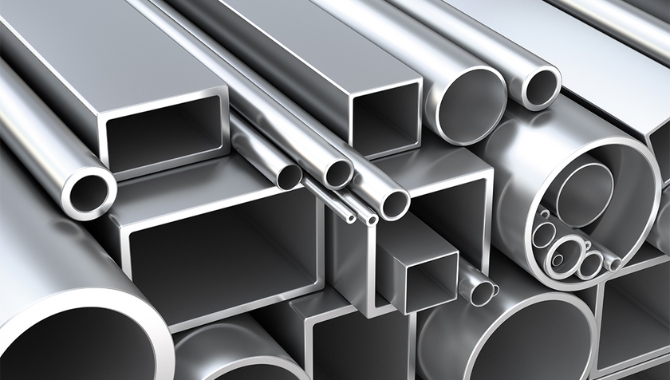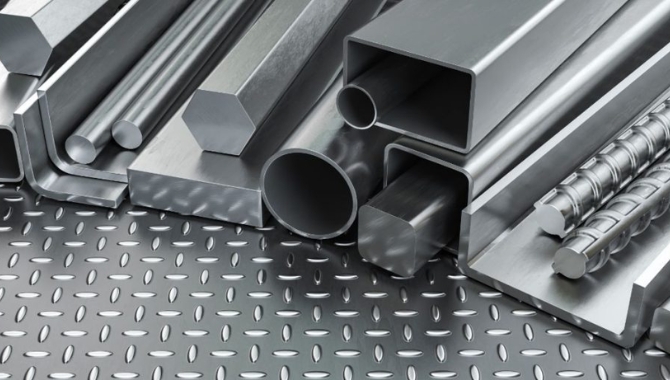Have you noticed why engineers and plumbers use “tube” and “pipe” in different ways? While we usually use these terms interchangeably but tubes and pipes actually have different characteristics. These differences can determine the cost of your projects.
Today we will know about the top 10 differences between tubes and pipes. So let’s start;
Key 10 Differences between Tubes and Pipes

In this part we will discuss the 10 main differences b/w tubes and pipes like size, strength, manufacturing, materials and uses.
1. Size and Measurement Standards
Pipes: The industry standard to measure pipes is usually by their nominal inside diameter. It is a standardized determination of the real inner diameter. To find pipe size, measure the inside diameter with calipers or ruler, then check a pipe size chart for the matching nominal size. This standardization helps engineers to calculate pressure drops, velocities and flow rates in piping systems accurately.
Consistent ID measurements guarantee predictable performance in different pipe operations and materials like municipal water networks, HVAC systems and oil refineries.
Tubes: whereas tubes are measured by their outside diameter (OD) with the help of precision tools like calipers or micrometers. The OD is measured directly across the tube’s exterior as it provides a reliable reference point for fitting and sizing. Tubes are usually measured in millimeters or inches.
This method facilitates easier connections and accurate external measurements to other parts. It is important in structural operations to determine the bending resistance, load bearing capacity, tube’s strength, stress distribution and compatibility with fittings.
2. Wall Thickness and Strength
Pipes: Standard pipe wall thicknesses are different for pipe categories like Schedule 40, 80, or 160. A 2-inch steel pipe with Schedule 40 has a 0.154-inch wall thickness. Whereas schedule 80 and 160 pipes of the same size have wall thicknesses of 0.218 inches and 0.436 inches.
This standardization guarantees that pipes can handle high pressures in demanding settings. Oil refineries and high-temperature steam lines usually need strong piping systems as they operate at pressures over 1,000 psi.
Tubes: They provide more flexibility in wall thickness. A tube with a 2-inch OD can have wall thickness ranging from 0.25 to 6.35 mm. Aerospace, fuel lines and brake lines mostly use thin-walled tubes (0.25-1.27 mm). Standard wall tubes (1.65-3.05 mm) are used in pneumatic systems, furniture frames and hydraulic cylinders.
Applications that need high structural integrity like heavy machinery, oil and gas pipelines and hydraulic systems usually use thick-walled tubes (3.18-6.35 mm).
3. Manufacturing Process
Pipes: The difference between tubes and pipes is that pipes are mostly produced through welding or seamless processes. The method for creating welded pipes is to roll flat steel and join the seam. while seamless pipes are extruded from solid billets. These methods facilitate high-volume production, with some mills making more than 500,000 tons yearly.
Tubes: Tube manufacturing needs more complicated processes for precision engineering. Pilgering or cold drawing techniques help you to tightly control wall thickness and diameter. Advanced quality control checks like eddy current testing guarantee structural integrity. This accuracy is important in industries like aerospace with tolerances as tight as ±0.002 inches.
4. Materials and Corrosion Protection

Pipes: Common pipe materials include carbon steel, PVC, and ductile iron. Each type has different corrosion protection levels. Carbon steel pipes provide moderate corrosion resistance that can usually last 20-30 years in non-aggressive environments. PVC pipes show outstanding corrosion resistance which can possibly last up to 15-25 years. Ductile iron pipes with ceramic epoxy linings can handle corrosive soils for 50-75 years.
Tubes: Particular materials are mostly used to improve the corrosion resistance of tubes. Grade 316 of stainless steel tubes resist corrosion in chemical processing and marine environments. Nickel alloys like Inconel provide outstanding resistance to high-temperature corrosion by handling temperatures up to 2000°F. These advanced materials facilitate tubes to work in harsh environments where standard pipe materials would fail quickly.
5. Applications and Usage
Pipes: They have an important role in moving liquids and gases in different industries. They are mostly used in water systems, oil and gas, chemical processing and sewage systems. They are important for proficient and safe fluid transport over long distances. Their ability to resist corrosion, handle large volumes and high pressures makes them important in city infrastructure projects, power plants and refineries.
Tubes: Tubes are usually preferred in mechanical systems, scaffolding and structural applications due to their precise outside diameter and wall thickness specifications. This precision facilitates more customization and design flexibility. Tubes also have a better strength-to-weight ratio and corrosion resistance. It makes them an appropriate choice for load-bearing structures.
6. Bendability vs. Rigidity
Pipes: Pipes are inherently rigid due to their manufacturing process and thicker walls. A 2-inch Schedule 40 steel pipe has a minimum bend radius of 24 inches which makes it resistant to deformation. It is important in high-pressure systems where pipes should keep their shape under heavy loads up to 3000 psi.
Tubes: Tubes provide better flexibility particularly in materials like thin stainless steel and copper. A 2-inch OD copper tube can bend to a radius as small as 6 inches without kinking. Such flexibility helps tubes to easily identify complicated routing in car brake and aircraft hydraulic lines.
7. Joining Techniques
The best pipe joining method depends on the material and use. Welding makes leakproof and strong connections for metal pipes. While threading cut spiral grooves on pipe ends for screw like connections which are appropriate for smaller diameters. Flanges are the circular discs on pipe ends that facilitate bolted links and easy disassembly. Each approach has different advantages in terms of maintenance, strength and flexibility.
Simpler methods like flaring and coupling are mostly used in tubes. Flaring spreads the tube end which makes a secure connection with fittings. Couplings use push-to connections or compression mechanisms for quick assembly. These are fast and affordable but may lack the stability of weld joints due to potential loosening from thermal cycling and vibration.
8. Cost Considerations
There is a great difference between tube and pipe costs. Simple manufacturing techniques and mass production make pipes more cost-effective. Standard wall thicknesses and sizes also allow for proficient high-volume production.
Welding pipe process can create 1,000 feet of pipe per minute substantially decreasing per unit costs. This cost effective technique makes pipe appropriate for big projects like city water systems where thousands of feet are needed.
Whereas tubes have a higher cost due to their particular applications and precision manufacturing. Cold drawing is a more labor intensive and slower method that produces just 30-50 feet per minute. Strict quality control measures and tight tolerances like ultrasonic inspection and eddy current testing can result in further higher production cost.
High-performance applications like aerospace hydraulics with Inconel tubes can increase the cost. The strict certification and complex alloys composition also contribute to the higher cost. This higher price usually guarantees durability and top performance in important operations.
9. Precision and Tolerance

Pipes and tubes are very different in their tolerances and precision. Pipes are mainly used for fluid transport which allow for wider tolerances. A 2-inch Schedule 40 steel pipe for example has an outside diameter tolerance of ±1% and a wall thickness tolerance of +15% to -12.5%. These looser tolerances are acceptable because small changes have a minimum impact on fluid flow characteristic.
Tubes need much tighter tolerances because of their use in structural and precision mechanical operations. A 2-inch OD stainless steel tube usually has a wall thickness tolerance of ±10% and an outside diameter tolerance of ±0.005 inches. Such accurate tolerances are important for operations like airplane hydraulic systems where even small deviations can cause system failures.
10. Surface Finish and Looks
Pipes: Another important difference between tube and pipe is in their surface requirements for particular uses. Pipes usually have a rougher finish which is fine for important uses. Standard carbon steel pipes show a surface roughness of 50-200 micro inches Ra (Roughness average).
This finish is appropriate for hidden piping or underground installation systems where looks are not important. In some fluid transport uses, a rougher surface can help as it promotes better heat transfer and turbulent flow in heat exchangers.
Tubes: Tubes mostly need a smoother finish for both function and appearance reasons. Stainless steel tubes in food processing or visible architecture can reach finishes as smooth as 10-20 micro inches Ra.
Besides improving looks, this smooth finish also increases corrosion resistance and decreases friction in fluid flow operations. Precision mechanical systems like hydraulic cylinders needs a smooth tube surface (usually 16 micro inches Ra or better) to guarantee longevity and proper seal function.
Conclusion
It is important for technical professions and engineers to learn the difference between tube and pipes. Each has unique manufacturing, sizes, rigidity and corrosion resistance and applications. This knowledge guarantees you the best option for specific projects which increases safety and proficiency and safety in different industries.
For expert tube and pipe services, contact KDM Fabrication today. Our skilled professional team can guide you about manufacturing, material selection and installation processes.
FAQS
Can tubes be used instead of pipes?
Tubes can replace pipes in some low-pressure systems. But pipes are mostly better for high-volume fluid transport because of lower costs and standardized fittings.
How can I choose between tube and pipe?
First, consider your application needs. For example, pipes are appropriate for high-volume fluid transport. Whereas tubes are preferred for precision mechanical systems. Determine important factors like material compatibility, install challenges and pressure ratings to make the correct choice.
What are the advantages of tubing over pipe?
Tubing provides smoother finishes, flexible material choice and tighter tolerances. These characteristics make tubes suitable for corrosive environments, high-precision applications, corrosive environments and systems needing frequent bending or shaping. Tubes also provide better strength-to-weight ratios.




